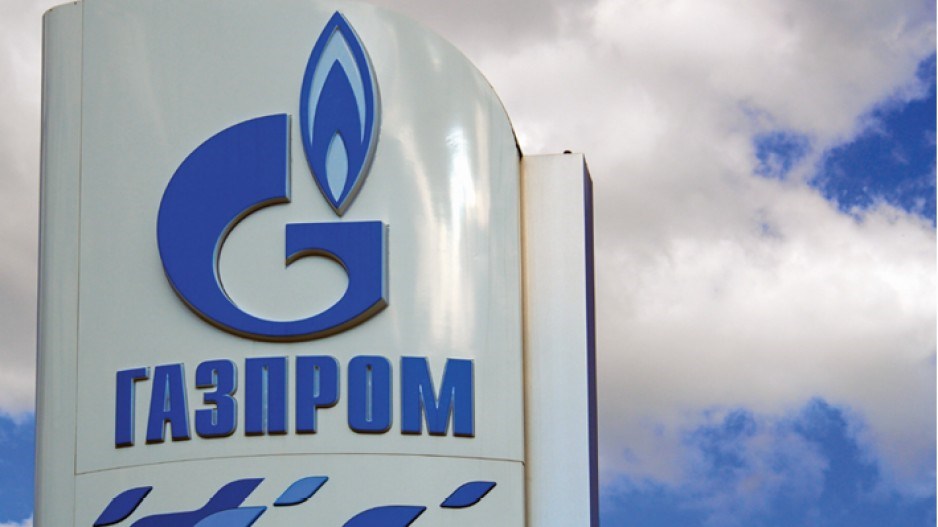Asia’s trade relations with Russia are on a firm upswing as Moscow looks east in response to the shuttering of relations with Europe and the West over the crisis in Ukraine.
The China Development Bank announced last week it intends to invest $5 billion in infrastructure projects in Russia’s Far East, mostly on transportation routes to take China’s manufactured goods to western markets.
This is one of a number of pending deals between Russia and Asian countries that had either stalled or seen talks slow to a crawl, but which are now re-energized as Russian President Vladimir Putin dismisses western sanctions as irrelevant to his country’s economy.
Russia has had significant reservations about allowing Chinese investment in strategic industries and infrastructure. But those qualms are lifting as Moscow anticipates a significant decline in its business relations with the West.
The biggest development in Russia-Asia trade will likely be next month, when Putin is expected to oversee the signing of a 30-year deal to supply 38 billion cubic meters (1.3 trillion cubic feet) of natural gas a year to China by pipeline.
The agreement between China and the Russian natural gas monopoly Gazprom was first mooted in 1997, but talks have proceeded at a snail’s pace in recent years. Russia has argued that it needs China to pay the same rate Gazprom gets from its European customers in order to finance the $22 billion pipeline, but Beijing has refused to accept that price.
At the moment, Russia supplies about a third of Europe’s natural gas, which brings in over $60 billion a year in export revenue. The pipeline to China, which is expected to be in operation by 2018, would deliver about a quarter of the volume of gas going west, but China’s demand for natural gas is continuing to grow fast.
So is China’s demand for oil, and this year it overtook Germany as the biggest buyer of Russian crude. Last week the Russian oil pipeline monopoly Transneft said it has been instructed by Moscow to boost its pipeline network from central Russia to the Far East.
Transneft first vice-president Maxim Grishanin said in Moscow that the company plans to connect oil fields in the Volga and Urals regions with the existing East Siberia-Pacific Ocean (ESPO) pipeline by 2020.
Russia ships about 16% of its crude oil to Asia, but it wants to double that by 2035 so that about a third of its output goes east. To that end, Transneft plans to double the capacity of the ESPO pipeline to 1.6 million barrels (80 million tonnes) a day by 2020.
While China is undoubtedly Russia’s biggest customer in Asia, Japan also looms large.
Japan is the world’s largest importer of liquified natural gas, and that need is expected to rise as the country seeks to replace its nuclear power industry in the wake of the 2011 Fukushima nuclear reactor disaster.
Japan’s oil imports from Russia now account for about 7% of its demand, but in 2013 grew by 45% over 2012.
The efforts by both Moscow and Tokyo to boost relations are tempered by repeated failure to solve a territorial dispute over Japanese islands occupied by Russia at the end of the Second World War.
And there are serious glitches in the relations between Moscow and Beijing too. Moscow is suspicious of Beijing’s ambitions in Central Asia, where China has become the largest trading partner of the former Soviet Union republics Turkmenistan and Kazakhstan, and the second largest partner of Uzbekistan and Kyrgyzstan.
Jonathan Manthorpe ([email protected]) has been an international affairs columnist for nearly 40 years.
Risky business: crisis deepens potential drawbacks of doing business with Russia
Canadian companies, like all other outsiders, have always found doing business in Russia’s opaque and unpredictable marketplace challenging to say the least.
It has often been impossible to tell what actions might affront the dignity of a senior local official, or excite his greed. In either case, what looked like a promising venture can disappear in a trice.
The challenges, however, may be far more open and obvious since the government of Prime Minister Stephen Harper decided to be among the leaders of the charge against Russian President Vladimir Putin for the annexation of Crimea and his apparent continuing efforts to excite separatist movements in the majority ethnic Russian regions of eastern Ukraine.
There have been calls by some Russian politicians to nationalize the assets of companies from western countries that have imposed sanctions on Moscow, which would include Canada.
Moscow has restricted itself so far to imposing entry bans on 13 Canadian politicians and other officials, mirroring Ottawa’s embargoes. But it will be all too natural if Canadian companies find the ease of doing business in Russia becomes even more cumbersome and unpredictable than usual.
Aircraft manufacturer Bombardier Inc. (TSX:BBD.A) has signed a letter of intent to sell 100 of its Q400 turboprop planes to Rostekhnologii for $3.4 billion, but when and whether that deal will be concluded is now anyone’s guess.
Several Canadian mining companies, including Global Cobalt Corp. (TSX:GCO), Kinross Gold Corp. (TSX:K) and Silver Bear Resources (TSX:SBR), are active in Russia. They now face uncertain relations with regulatory authorities and partners.
Harper and his ministers say Canadian companies doing business in Russia must accept the added risks. “We will not shape our foreign policy to commercial interests,” Harper said recently.
Canada’s trade with Russia is not large, about $3 billion a year. Canadian two-way trade with Ukraine in 2012 was only $350 million, but there are 1.2 million Ukrainian-Canadians, according to the 2003 census, and only 500,600 Russian-Canadians.




